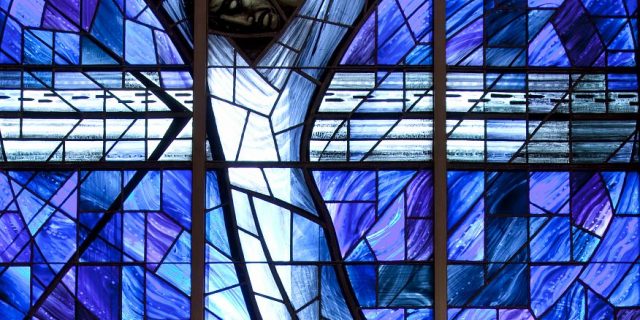
Early Sunday morning on September 15, 1963 four members of the Ku Klux Klan planted fifteen sticks of dynamite beneath the front steps of Birmingham Alabama’s 16th Street Baptist Church, a prominent African-American congregation active in the growing Civil Rights movement. The bomb detonated at 10:30AM, killing four children as they changed into their choir robes for the morning service. Witnesses later said the explosion propelled the girls’ bodies through the air “like rag dolls.”
Their names haven’t been forgotten: Addie Mae Collins, 14; Carol Denise McNair, 11; Carole Robertson, 14; and Cynthia Wesley, 14. Their deaths seared America’s conscience, and ten months later President Lyndon Johnson signed into law the Civil Rights Act of 1964.
It’s impossible to walk through the church today without feeling the weight of America’s tortured and painful history of race relations. That such a crime occurred in a church is beyond comprehension. But because it occurred in a church, there’s a hope lacking in any other part of American life and a gospel that offers forgiveness for everything, even for the death of little girls.
That transcendent truth is captured by the stained glass window now adorning the church’s south wall. Contributed by the people of Wales two years after the bombing, it portrays a black, cruciform Jesus, his arms stretched heavenward. Along the bottom are the simple words, “You do it to me,” taken from Matthew 25:40, “…as you did it to one of the least of these my brothers, you did it to me.”
The window isn’t a judgment; although it condemns the killing of innocents everywhere. Neither is it a sign of defeat, as though there’s nothing to be done about heinous acts of violence except pray. What it does instead is point to Jesus on the cross as the only place where forgiveness is possible—for bombers and their victims’ families as well as for nations that can’t seem to escape cycles of mindless violence. In one of those twists of history that must have been divinely ordered, the pastor’s sermon the Sunday the bomb exploded was to have been, “A Love that Forgives.”
This week, almost 52 years after the bombing of the 16th Street Baptist Church, another African-American church suffered a similar act of racial hatred and murder. Dylan Roof, a young white man from Lexington, SC, walked into Charleston’s Emanuel African Methodist Episcopal Church on Wednesday night with one thing on his mind. He was there, he told the few surviving witnesses to his carnage, “to shoot black people.”
Following an hour-long prayer meeting that he attended as a guest, Roof accomplished his purpose. He pulled out a handgun and murdered nine innocent people. Like the victims in Birmingham, their names should be remembered: Cynthia Hurd, 54; Susie Johnson, 87; Ethel Lance, 70; Rev. DePayne Middleton-Doctor, 49; Tywanza Sanders, 26; Rev. Daniel Simmons Sr., 74; Rev. Sharonda Singleton, 45; Myra Thompson, 59; and the church’s pastor, Rev. Clementa Pinckney, 41.
Modern America struggles to find language to express, not just the revulsion and horror at such an act but the motivation that lies behind it. Experts speak of factors like mental illness, psychological profiles, violent racism, the availability of guns and a society that grows more unstable and contentious with each passing month. But modern psychology and sociology can only go so far. The one word that accurately describes Roof’s action is a word America doesn’t want to face.
What Roof did was evil.
He took the lives of nine innocent people, gathered in a house of worship, for no reason other than they were African-American and he is white. The emptiness in his soul led him to believe that was reason enough to kill them. That kind of evil doesn’t yield to rational analysis, political expediency or personality theory.
It does, however, yield to grace.
The shootings in Charleston, like the bombing of the 16th Street Baptist Church before it, point to a critical truth that the larger culture has yet to come to grips with. That the act occurred in a church doesn’t make the pain any less real or the challenges it presents to the community any less difficult. It does, however, place the tragedy in a broader context, one that includes the possibility of hope and the promise of renewal.
The victims and their families are part of a community of faith, people who worship, pray and minister together. People who orient their lives around a gospel of grace more than a culture of hate and death. As African-American churches have done for centuries—maybe better than any other Christian group—the congregation of Emanuel African Methodist Episcopal Church will grieve through this tragedy and emerge at a deeper level of faith and love. They will overcome, in the words of one of their best-loved spirituals, because of the One who has the power to forgive and the mercy to heal broken lives.
